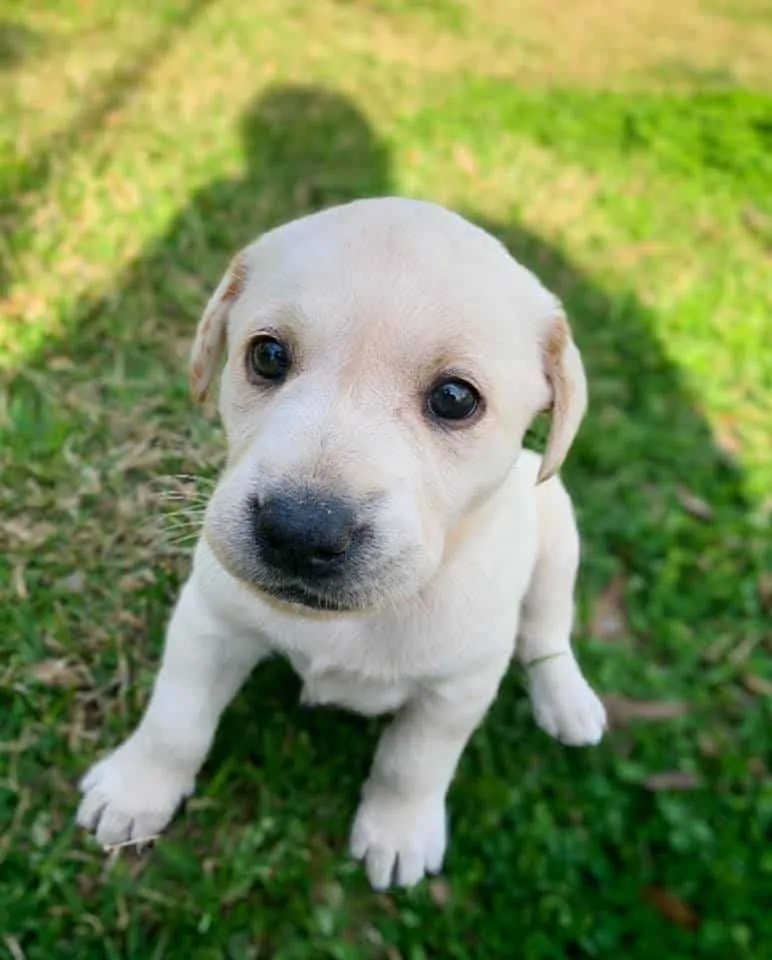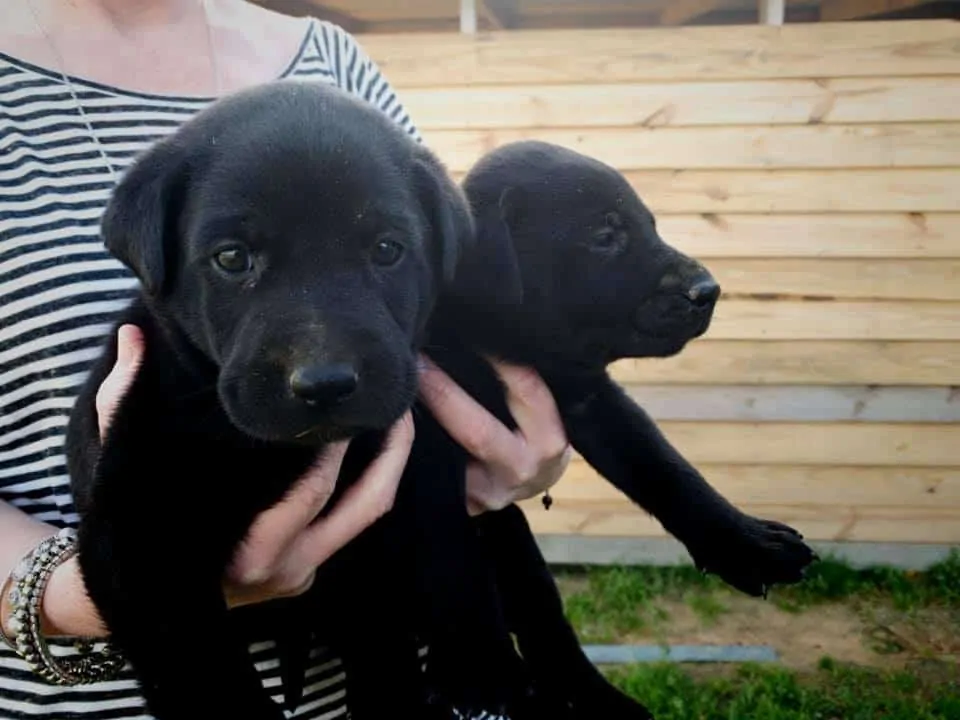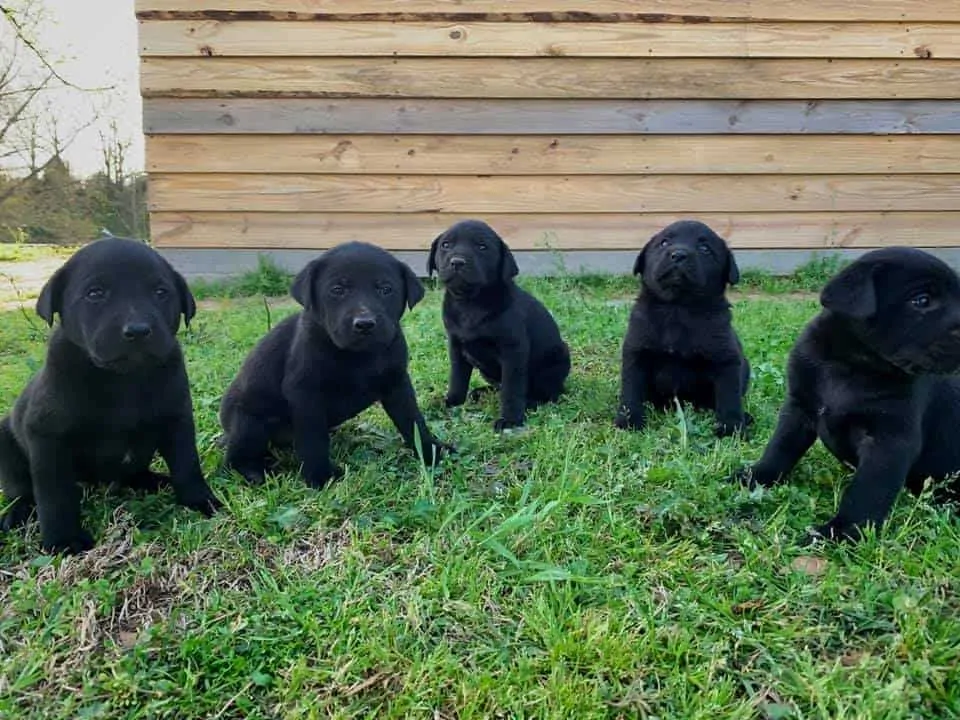Nothing is more exciting than the prospect of becoming a brand new dog parent. You run out and buy more dog toys than your pup will ever need and a dog bed the size of a full grown Great Dane. Your puppy deserves only the best, and you’re going to do everything you can to make that dream a reality. It can be tempting to purchase or rescue the first puppy you lay your eyes on, the one that makes you squeal with excitement over “how cute he is!” Rushing to scoop up a puppy, any puppy, without prior research can lead to headaches down the road.
Puppies may all look cute and like a one-size fits all package, but puppies, like any dog, have their own set of personality traits that will develop and grow as they age into adulthood. Especially if your puppy will be joining your family as the new kid sister or brother to another dog or puppy already settled into your household, it is necessary to do some homework on what kind of puppy you may be bringing home. Will your puppy be hyper and overly interactive? Will your puppy be anxious and clingy or an alpha personality with a need to dominate other pets you may own?
One method for predicting your potential puppies disposition and character traits are puppy personality tests. Personality tests, also called temperament tests, are utilized by breeders and shelters for a number of purposes, and can be a helpful tool for you when looking for a puppy that fits your personality, lifestyle, and your family. This article will summarize and discuss the purpose and idea behind puppy personality tests. We will also cover in detail the Volhard Aptitude Test puppy personality and also share simple tests that you can do yourself to help give you an idea of what kind of puppy you may be bringing home.
Contents
Puppy Personality Tests
Puppies have behavioral tendencies that can be recognized in less than two months after they are born. Personality tests can help measure and predict how these behaviors will show themselves later in the puppy’s life.
Puppies, like babies, are born with a set of innate traits that manifest themselves during their early development. Some puppies may bound into a new environment without fear, while others will hesitantly follow the group. Puppies may nip and jump on other puppies in the litter to assert dominance. Other puppies may hunker down in a corner or roll over immediately when their assertive brother tries to tackle them. All of these scenarios may happen in a litter of puppies, and each puppy may be different from the other. How can you judge which puppy is right for you? Maybe you already know that your dog back home is easily frightened and is always attached to your hip. If this is the case, then you probably do not want to take home an assertive dominant puppy.
Puppy Personality Tests: Their Purpose
Puppy personality tests, or temperament tests, use various techniques to predict personality elements in puppies. Breeders often use these tests to match puppies with owners who fit the puppies test results. Breeders test each puppy and come up with a summarized prediction of the puppies temperament. Generally, breeders who utilize personality tests will also poll the potential owner to get an idea of what that person’s lifestyle is like, what they’re looking for in a puppy, and what puppies in the litter jive with that person’s own personality.
Shelters also use these tests to match puppies with potential adopters, while also testing for aggressiveness and other dangerous or at-risk behaviors. Puppies that express aggression or behaviors of concern may require extra training before putting them on the adoption list, or might narrow down the list of potential adopters to only well-experienced pet owners.
Puppy personality tests are a fun and interesting way to get into the psyche of man’s best friend. It’s like taking one of those addictive online quizzes that promises to predict your future based on what color you like, except puppy personality tests are backed by research and have been around for decades. The main goal of using puppy personality tests is to ensure that puppies go to warm and loving homes where they are more likely to spend their entire lives.
Unfortunately, it is common for inexperienced pet owners to make a rushed decision and take home puppies that is the complete opposite of what they are looking for. Unable to train or deal with the temperament and behavior of their new puppy, they may decide to take the puppy to an animal shelter or find them a new family. By using puppy personality tests, we raise the chances of building cohesive relationships between pet owners and new puppies.
Volhard Aptitude Test
The Volhard Puppy Aptitude Test, or PAT, was built off of puppy aptitude tests from as early as the 1930s. Early puppy tests were used to measure the learning capacity of puppies. Now, the Volhard Aptitude Test uses a six point system that consists of ten tests to measure personality traits. According to the creators of the Volhard Aptitude Test, the ideal age to begin a personality test is around 49 days after birth. Performing the test any earlier or much later may affect the results of the test and the ability to provide better training intervention. The Volhard Aptitude Test sounds overly scientific, but it’s not a difficult test to understand. It’s a great example of how puppy personality tests can get into the weeds and help you figure out what puppy is your perfect math.
The following section will discuss in greater detail the specifics of each personality element and what that means for your puppy’s future.
Test Descriptions: What Are They Actually Testing For?
The Volhard Aptitude Test uses ten tests to determine and score a puppy based on personality specific behavior. These traits include the following: Social attraction; following; restraint; social dominance; elevation; retrieving, touch, sound, and sight sensitivity; and stability. Each of these elements are tested separately.
Social Attraction, Following, and Restraint
Social Attraction measures a puppy’s sociability and attachment. In other words, does your puppy bounce with excitement over making new friends or prefer to keep to themselves? Unsocial puppies are not bad or out of the ordinary, but they may require more socializing during their early months of development to ensure that they do not behave aggressively towards strangers.
Following is relatively straight forward. Following measures a puppy’s tendency to follow a person rather than stray independently. A puppy that follows is more likely to have greater attachment to its owner and will have a better tendency to follow commands. If you don’t have a great deal of time to train your puppy, then you may want a puppy that is more attentive to following and listening.
Restraint determines a puppy’s submissiveness, as well as a puppy’s acceptance of restraint by a person. Restraint is important when considering trainability of a puppy. Puppies with low restraint will be more stubborn and may fight you when on a leash or if you need to subdue them. This may also be important if you’re interested in getting a large breed dog and need to make sure you can keep it under control.
Social and Elevation Dominance, Retrieving, and Stability
Social dominance is similar to restraint and measures a puppy’s acceptance of human dominance. It helps to predict the degree that a puppy will follow commands. Puppies with high social dominance are generally more easy to train and are more eager to please. Service dogs generally score well on the social dominance spectrum.
Elevation examines of a puppy’s willingness to submit during times of stress and lack of control. An example might be a puppy sitting for an examination by a veterinarian or during a grooming session. Will the puppy stand calmly or panic when a stranger attempts to control them in a strange and new environment? If you are wanting a puppy that will need frequent grooming, then having a puppy with a good score for elevation dominance is key.
Retrieving tests a puppy’s need to please others by performing a set of actions, such as bringing back a toy. Retrieving is another personality trait that may indicate the ease of trainability, as well as how eager your puppy will be to please you and immediately follow commands. Hunting dogs, service dogs, and other working dogs normally have excellent retrieving scores.
Stability measures a puppy’s response to foreign stimuli, such as a new item in the home or a new environment. Frequent moving or changes in household family members might stress a puppy who has a low score for stability. If you are in the military or are in-between jobs or homes, then finding a puppy with a level stability score is important.
Touch, Sound, and Sight Sensitivity
Touch sensitivity provides information for how accepting your puppy is to outside touch or pressure. Puppies will low touch sensitivity may have eventual issues with their pads and will avoid rough terrain. If you are an outdoor runner and are adopting or purchasing a puppy to be your new running partner, then you’ll want a puppy with a positive score for touch sensitivity, since they will be more likely to tolerate the outdoors.
In addition, sound sensitivity is a great predictor for preventing fear of fireworks, thunder, or other loud noises. Puppies who score with a high tolerance to sound will be unfazed by sudden sharp noises or distractions. For example, if a breeder specifically trains dogs for police or military use, then sound sensitivity would be one of the more important elements of the overall test due to the chaotic sounds that occur during their line of work.
Finally, sight sensitivity identifies a puppy’s reaction timing to movement and urge to chase. Does the puppy resist the urge to take chase when an object moves in front of them or do they ignore it? This is a good indicator of whether the puppy will one day chase cats, cars, or other quick moving objects. If your dog specializes as a hunting dog, then this might be an area of greater importance to you.
Conducting the Volhard Puppy Aptitude Tests
There are ten elements that can be tested using the Volhard Puppy Aptitude Test. One of those tests, elevation dominance, includes holding a puppy up to gauge their reaction of not having control. Puppies who show little or no reaction are more likely to be calm in situations like grooming or visiting the vet’s office.
The great thing about the Volhard Puppy Aptitude Test is that it can be conducted without any prior experience, as long as you follow the guidelines. The person purchasing or adopting the puppy should not be directly involved in the testing process. The Volhard Puppy Aptitude Test bases each test score on its own and does not average the scores to come up with a total number. Each category is considered individually and should be taken into account when considering what puppy is best for your home.
To conduct the Volhard Puppy Aptitude Test, the litter should each be tested individually and in a room that the puppies will not recognize. The tester should be a stranger to the puppy and the only other person in the room should be the person keeping score. The scorer should observe the puppies while not being a distraction.
Volhard Puppy Aptitude Test Elements and Steps
Each test requires a set of steps to determine a score. The following list summarizes the guidelines for testing each element of the Volhard Puppy Aptitude Test.
Social Attraction, Following, and Restraint Tests
To test for social attraction, the puppy is brought to a room by someone the puppy is comfortable with and then left with the tester. The tester will encourage the puppy to come to them with clapping, whistling, or other verbal commands. A puppy with an openness to strangers will scamper across the room to meet the tester and will pay little attention to the fact that the person who brought them to the room disappeared.
The following test consists of the tester walking around the room and encouraging the puppy to follow them. The tester can make sounds or commands of encouragement to try and get the puppy to follow.
Restraint is tested by placing the puppy on their back and holding them that position. The scorer should base their score based on the puppy’s reluctance or comfort in a submissive position.
Social and Elevation Dominance, Retrieving, and Stability Tests
To test for social dominance, the tester will sit or crouch down to the level of the puppy and pet the puppy along it’s back. The goal is to see if the puppy will lick the tester’s face or show any sign of affection. The scorer will determine a score based on the puppy’s reluctance or immediate insistence on showing affection.
Testing for elevation dominance requires lifting the puppy gently off the ground and holding them for a short amount of time. It is suggested that the puppy be held for approximately 30 seconds, but an extended time is not necessary if the puppy reacts quickly.
Like a game of fetch, the tester tests for retrieving by using a small object to gain the puppies attention and then tossing it away. The score is based on the puppy bringing the object back.
Finally, stability requires placing an object that the puppy does not recognize in the center of the room. The creators of the Volhard Puppy Aptitude Test suggest using an open umbrella, but you can use any other household item that the puppy has never seen before, so get creative. Observe the puppy’s reaction to the new object and score the test based on whether the puppy shows fear or interest in the object.
Touch, Sound, and Sight Sensitivity Tests
When testing for touch sensitivity, the tester will insert their finger into the pad of the puppy’s foot and add pressure until the puppy shows clear discomfort or wrangles free.
Sound sensitivity is testing by making a loud noise in the room from a distance while the puppy sits in the center of the room. Suggested methods are throwing a heavy book down on the floor or hitting two aluminum pans together. The scorer will note the score based on the puppy’s immediate reaction to the noise.
The final test for the sense sensitivities, sight sensitivity, can be captured by jerking an object across the room to attract the puppy’s attention. This item might be a stuffed animal attached to a string, a blanket, or any other object that can easily be pulled to entice the puppy to investigate.
Concluding Thoughts on the Volhard Puppy Aptitude Test
A detailed explanation for the scoring methods and results can be found on the Volhard Puppy Aptitude Test website made by the creators. Test results are not a guarantee but are an experimental method to predict personality traits based on historical research and generally consistent results.
The great thing about the Volhard Puppy Aptitude Test is that it is not hard to do yourself and it is pretty straight forward. You can also easily adapt the Volhard Puppy Aptitude Test to fit your own interests. The bottomline is: test for the characteristics that are important to you so that you can find the puppy that matches you.
Simple Personality Testing: Doing It Yourself
Testing a puppy’s personality does not require a lengthy resume chocked full of professional dog experience. With common sense and attention to detail, you can conduct your own tests to help determine if a puppy is right for you. When conducting a personality test, try to isolate yourself and the puppy so there are no other distractions.
Breeds, shelters, and dog trainers often use personality or temperament tests to help predict the disposition of puppies. However, these tests can sometimes equal extra costs if you’re purchasing a puppy. There are several simple tests that you can do yourself that require little expert knowledge or skill. Common traits that you may want to consider testing for are: friendliness, independence, and sensitivity. Here are the following tests you can perform to check for each character trait.
- Friendliness Test – one important element of raising your puppy is ensuring that they are actively socialized and learn to adjust to strangers and other pets. Similar to the Volhard Aptitude Puppy Test, take your puppy into an open room where your puppy won’t easily be distracted. Walk out of the room and leave the puppy alone. Then, have a stranger step into the room and greet your puppy.
If your puppy excitedly scampers up to the stranger and licks, plays, or allows the stranger to pet them, then your puppy likely has a more trusting personality and will be naturally social. If the puppy cowers and cries, or acts distrusting and insecure, then you will need to spend more time socializing your puppy. Puppies should be socialized whether they are naturally outgoing and trusting or are anxious and fearful of new faces and change.
- Independence Test – There are several tests that you can conduct yourself to predict your puppy’s independence or lack of. Natural independence may deter attachment issues in puppies and eventual clinginess in adult dogs. One method for testing independence in your puppy is to hold your puppy up under the arms so that its hindlegs dangle. If your puppy thrashes and fights to be freed, then your puppy is likely to be more independent.
You can also hold your puppy on its back and cradle it. If the puppy again fights to be released or avoids eye contact, then your puppy is probably a self-confident pup. If your puppy isn’t distracted by you or anyone else entering the room, then that is generally another sign of independence.
- Fear test – No one wants to have a puppy who is skittish and fearful. Knowing that your puppy is easily frightened will help you better prepare and train your puppy to be less anxious and afraid as an adult. An easy test for fear and sensitivity is dropping an item to make a loud sound. This is also an element of the Volhard Aptitude Test, specifically for the sound sensitivity test.
You can drop a metal spoon on the kitchen tile or a thin book on the floor. If your puppy cowers or runs for cover, then your puppy may need a little extra nurturing and training to alleviate those ingrained fears. It’s normal and expected for your puppy to have some kind of reaction to loud noise, but exaggerated cowering, dramatic crying, running, or hiding are indicators of fear and sensitivity.
A detailed overview and example of a puppy undergoing a puppy personality/temperament test can be found in the below Youtube video. It is a great example of what kind of stimuli to use during a test and how to gauge those reactions.
Putting It All Together
Adopting and raising a puppy is a rewarding and unique bonding experience. Personality tests are a fun and interesting way to learn more about our furry companions and whether they match our own personalities and lifestyles. They are not as complicated as they may seem and can be conducted by a breeder, shelter, trainer, or by your average pet owner. Using a personality test is an excellent way of predicting the ease of transitioning your puppy into your family and home.
Bringing home a new puppy is incredibly exciting and rewarding. Your new puppy will become a part of your family and you will get the amazing experience of watching your puppy grow and develop into an adult dog full of personality. It’s basically like having a child go to college! If you’re interested in learning about all of the phases that a puppy undergoes during their early development, you can read our article here.
To help you pick a puppy that will settle right into your household, consider using a breeder or shelter that utilizes puppy personality tests, or try a few tests on your own if you are able to have some alone time with your potential puppy. Just like people, puppies are all ingrained with unique personality traits that will linger around in their behavior for a lifetime. Our natural instincts and tendencies make us who we are. Our dogs, though they may not have the same life experiences or responsibilities as we have, are all deep soulful beings with traits that make them specifically different from the rest. Personality tests can give us a peek into the layers that make up puppy behavior and pair us with our puppy soulmates.




